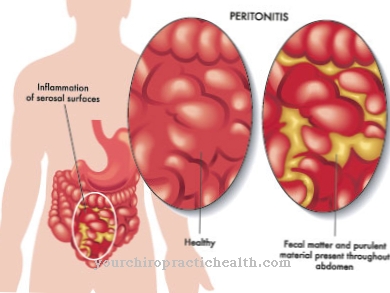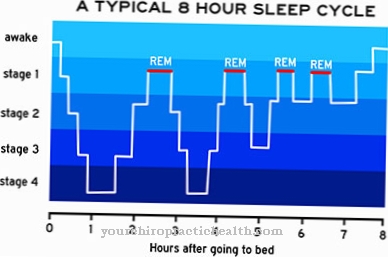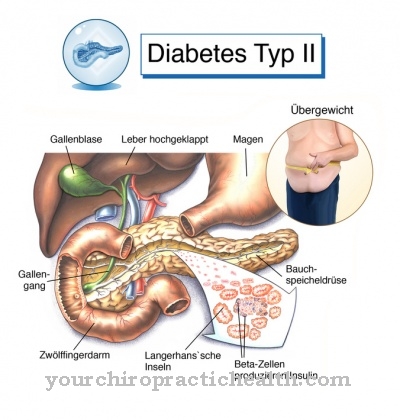At various online shops it is now possible to order glasses according to specific specifications and wishes. However, not every visual impairment or visual impairment indicates the need for glasses. There can be several underlying causes for the condition. One cause that has increasingly occurred in younger people in recent years is glaucoma. This article deals with a special form of the disease, the Angle-closure glaucoma. What is meant by this? How is therapy carried out? How can the disease be prevented? This and much more is explained below.
What is angle-closure glaucoma?

Glaucoma, colloquially known as glaucoma, shows itself in the fact that the optic nerve is damaged by various causes. This leads to a loss of the visual field. Furthermore, the intraocular pressure is enormously increased. There are different forms of glaucoma, such as: B. open-angle glaucoma, normal pressure glaucoma, secondary glaucoma or narrow-angle glaucoma, with which this article deals more and more.
Narrow-angle glaucoma manifests itself in the fact that the chamber angle is narrowed and thus the resistance of the ocular fluid that drains off increases. Since the rainbow skin is more arched than normal in this disease, it also hinders drainage. Especially in the dark the angle of the chamber is narrowed because the pupil is dilated. Therefore, especially at night, there can be an enormous increase in intraocular pressure (glaucoma attack), which must be treated by an emergency doctor.
causes
There is no specific cause that leads to glaucoma. Basically, however, it should be stated that increased intraocular pressure is related to this. Furthermore, the optic nerve is not supplied with sufficient blood. This undersupply can also make it easier to develop glaucoma.
Our eyes need eyewash to function properly for normal vision. This eyewash is produced but cannot drain normally in narrow-angle glaucoma. This creates a pressure that constantly acts on the optic nerve. This pressure narrows the nerve, which ultimately leads to impaired vision.
Other causes that favor a disease are nearsightedness or farsightedness, low blood pressure, metabolic diseases, old age, a thin cornea or hereditary factors.
You can find your medication here
➔ Medicines for visual disturbances and eye complaintsSymptoms, ailments & signs
As already mentioned, the intraocular pressure can sometimes only increase to a critical level at night, which is why the disease can therefore remain undetected by an ophthalmologist. Therefore there are no symptoms.
If symptoms such as impaired vision or loss of normal vision are observed, the disease is usually advanced. Complete regeneration is no longer possible because the optic nerve is already damaged. Nevertheless, an ophthalmologist should definitely be consulted in order to contain the progression of glaucoma. Without this procedure, the sick person goes blind.
In an acute attack, severe pain suddenly occurs in one eye and the corresponding side of the head i. V. m. Nausea and vomiting. It is an angle block. The aqueous humor in the eye can no longer drain. Intraocular pressure values of up to 70 mmHg can arise. Therefore, action must be taken quickly to prevent blindness.
This is often associated with a hard eyeball and the perception of veils or rings in light sources. Some patients also speak of "constantly foggy vision" or blurred vision.
Congenital glaucoma can cause damage and even complete blindness in babies. Therefore, an examination should be carried out immediately in newborns of already ill glaucoma patients in order to exclude damage or to be able to treat immediately. If congenital glaucoma is diagnosed in an adult, this is often indicated by a cloudy cornea, increased sensitivity to light, or constantly watery eyes. Surgery is the only way to get better.
Complications
Because the disease is often only recognized late, it can progress if left untreated. This means that incurable damage to the optic nerve may already have developed. If the disease is already well advanced, surgery may be necessary to preserve the eyesight. An artificially created drainage channel must be created in the eye.
In connection with an operation, complications such as infections, bleeding, wound healing disorders, problems with anesthesia, etc. can occur at any time. In the special case of eye surgery, bleeding or painful inflammation can occur in the eye, leading to irritated and swollen eyes.
The laser method is also used to treat glaucoma. However, this is not a permanent solution. Since this treatment has to be repeated over and over again, scarring and inflammation can develop.
If the disease is diagnosed in a not advanced stage, it is usually treated with the help of eye drops. These drops must be administered for a lifetime.Alpha agonists or prostaglandins are often used for this. These drugs are effective at lowering internal pressure in the eye. Complications in the area of this treatment method are not known, apart from slightly burning eyes when applying the drops. There have been isolated reports of slight allergic reactions to ingredients or preservatives.
When should you go to the doctor?
Anyone who suffers from deteriorating eyesight should definitely consult an ophthalmologist. However, this is not only recommended for older people. If a change in vision is still felt, such as B. blurred vision, "bent" edges, holes or black spots in the picture or constant flashes, a specialist should be consulted immediately. If no medical treatment is sought, this disease leads to blindness.
Another sign of narrow-angle glaucoma is constant headache or sore eyes. If this pain can be observed over several days, a doctor's visit should also be planned. If nausea and vomiting occur and the eyes are red, these are also signs of illness.
If the family already has an illness in this regard, other family members should take regular preventive examinations to determine the intraocular pressure. Anyone over the age of 40 should also have an ophthalmological check-up, as the risk of an illness increases with age. Even small changes can be perceived that would go unnoticed in normal everyday life.
Doctors & therapists in your area
diagnosis
In the rarest of cases, angle-closure glaucoma is itself caused by pain or similar. detected. The condition will be noticed by a thorough optician or ophthalmologist. These have devices for measuring eye pressure. If high intraocular pressure is measured, this is already a sign of glaucoma. An intraocular pressure of 21 mmHg or more is considered critical and leads to further investigation.
The ophthalmologist will therefore examine the field of vision to identify any further restrictions. Furthermore, the fundus is examined with an ophthalmoscope. There will be an enlarged cavity where the optic nerve exits. Depending on how deep and how extensive this cavity is, it can be estimated to what extent the optic nerve is damaged.
Lasers are also used to precisely measure the optic nerve as a whole. The HRT (Heidelberg Retina Tomograph) will be used for this. Corneal pachymetry is used to determine the thickness of the cornea. OCT (optical coherence tomography) or GDx (laser polarimetry) can be used to determine the strength of the nerve fibers in the immediate vicinity of the optic nerve.
Using these procedures will reveal whether or not you have an actual glaucoma disease. Anyone who is suspected of having an existing disease and is sent to such an examination by the ophthalmologist for the purpose of a clear diagnosis does not have to reimburse any costs. Otherwise, these examinations are usually not included in the statutory health insurance services.
Treatment & Therapy
If glaucoma is recognized as such, immediate treatment should be given. If the disease is in the early stages, no massive interventions will be necessary.
Treatment with eye drops will be done first. Drops with active ingredients of the prostaglandins, cholinergics or beta blockers are used. Medicines of this type are supposed to lower the internal pressure in the eye, facilitate the drainage of the aqueous humor and increase the transparency of the ciliary body. A combination of different active ingredients is also possible. If the glaucoma does not come to a standstill or if it even worsens, laser therapy may be necessary as a surgical intervention. However, in the beginning it is usually sufficient to simply drip several times a day.
If an operation is unavoidable, the port of passage for the aqueous humor is often optimized by laser in the case of narrow-angle glaucoma. This improves the flow of aqueous humor between the chambers of the eye. With other treatment methods, the ciliary body is obliterated or argon laser trabeculoplasty is used, which also improves the flow of aqueous humor.
Iridectomy is another way to maintain and improve vision. A laser is used to perform a small operation on the conjunctiva, the dermis and the ciliary body. Cataract surgery, in which the iris is treated, is also used to lower intraocular pressure.
Outlook & forecast
If the diagnosis "narrow-angle glaucoma" is present, this can initially be quite a shock. However, there are good prospects for a life without restrictions. This disease cannot be cured. Nevertheless, immediate ophthalmological treatment can determine exactly what stage of the disease the patient is in. If appropriate treatment is then started, the glaucoma can be stopped. The eyesight can be preserved.
However, if glaucoma is not treated, it inevitably leads to blindness. The same applies to an attack of glaucoma, which was explained above. If there is no immediate medical treatment here either, the patient will lose his sight in this eye.
You can find your medication here
➔ Medicines for visual disturbances and eye complaintsprevention
There is no direct prophylaxis in this area. It is important that everyone sharpens their perception and reacts immediately to changes in vision. The rule here is "early detection preserves eyesight"!
Anyone suffering from diabetes or circulatory disorders should attend regular ophthalmological appointments. In this way, the intraocular pressure and the general condition of the eyes can be constantly monitored. Likewise, people whose relatives are already known to have glaucoma should visit their specialist on a regular basis.
Aftercare
Close-angle glaucoma should always be treated by a doctor first. In most cases, the options for follow-up care are severely limited, so that the person affected is primarily dependent on the removal of the disease in order to prevent further complications and complaints. The earlier the disease is detected, the better the further course of this disease is usually.
In most cases, narrow-angle glaucoma can be treated relatively well with the help of eye drops or other drugs. There are no particular complications, but the person affected should ensure the correct dosage.
Furthermore, surgical interventions are not infrequently necessary to permanently alleviate the symptoms. The patient should definitely rest after such an operation and protect the entire body, whereby the eyes should be protected in particular. Regular examinations are also very useful after a successful procedure. In most cases, this disease does not reduce the life expectancy of the person affected.
You can do that yourself
Independent treatment of this disease is not possible. Therefore, every patient should regularly undergo all suggested examinations. In this way, the progress of the disease can be determined immediately.
If you have been diagnosed with narrow-angle glaucoma early on, you should definitely use the prescribed eye drops regularly and at precise intervals. In addition, everyone concerned should pay attention to a healthy lifestyle. This includes taking regular exercise, doing good eye care, and eating a healthy diet.
Accordingly, nicotine or excessive alcohol consumption should be avoided, as these unnecessarily poison the organism. Instead, cleansing and detoxifying foods should be consumed. This includes fruits, vegetables and seedlings. Therapeutic fasting also brings relief to some patients. Furthermore, attempts should be made to reduce stressful situations to a minimum.
In addition, attention must be paid to eye strain and - if possible - reduced. Targeted eye training can be carried out. This provides relief and improves the psychological condition of those affected. Here is an exercise: the arm is stretched upwards with the thumb, while the arm is moved in different directions, observe the thumb, but the head is not turned with it. As a person affected, everyone can do a variety of things in order to be able to lead a fulfilling and fulfilling life despite illness!

























.jpg)

.jpg)
